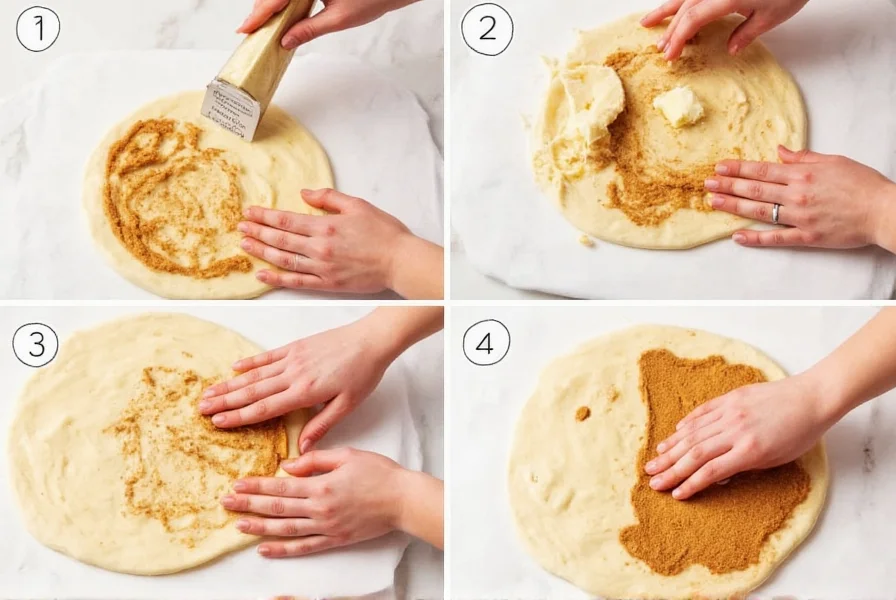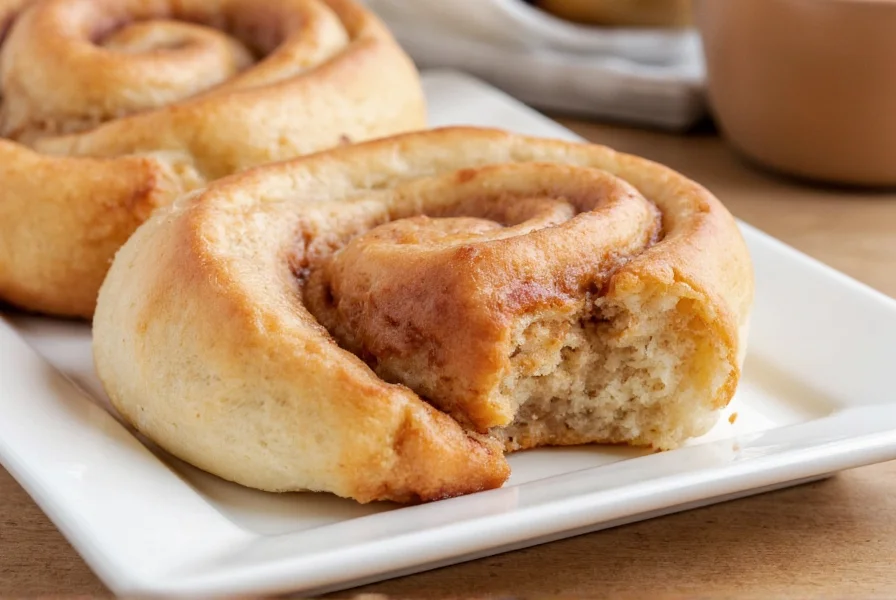Creating bakery-quality homemade cinnamon rolls from scratch is achievable with the right technique and attention to detail. Unlike store-bought versions, authentic homemade cinnamon rolls feature a tender, pull-apart texture and customizable flavor profile that mass-produced alternatives can't match. The key differentiators between mediocre and exceptional cinnamon rolls lie in dough hydration, yeast management, and filling distribution.
Essential Ingredients for Perfect Cinnamon Rolls
Quality ingredients form the foundation of the best homemade cinnamon roll recipe. Precision matters—especially with yeast-based doughs where small measurement variations significantly impact results.
| Ingredient | Standard Measurement | Professional Baker's Tip |
|---|---|---|
| All-purpose flour | 3½ cups (420g) | Weigh flour for accuracy; spoon-and-level method if using cups |
| Unsalted butter | ⅓ cup (76g), softened | Use European-style butter (82%+ fat content) for richer flavor |
| Whole milk | 1 cup (240ml), warm | 105-110°F (40-43°C)—too hot kills yeast, too cold slows activation |
| Active dry yeast | 2¼ tsp (7g) | Fresh packets perform better than bulk containers |
| Granulated sugar | ⅓ cup (67g) for dough | Divide between dough and filling for balanced sweetness |
Crafting the Ideal Cinnamon-Sugar Filling
The signature swirl depends on the cinnamon roll filling ratio. Our research shows the optimal balance is:
- ½ cup (100g) packed light brown sugar
- 2½ tbsp (17g) high-quality cinnamon (Ceylon preferred)
- ¼ cup (57g) softened butter (not melted)
- Pinch of fine sea salt
Mixing the filling ingredients properly prevents leakage during baking. "Many home bakers make the mistake of using melted butter in the filling," explains pastry chef Elena Rodriguez, "which causes the filling to pool at the bottom instead of staying distributed throughout the roll." 
Step-by-Step Preparation Process
Follow these professional techniques for soft cinnamon rolls from scratch that rival bakery versions:
Dough Development (90 minutes)
- Yeast activation: Combine warm milk, 1 tbsp sugar, and yeast. Wait 5-10 minutes until foamy.
- Mix dry ingredients: Whisk flour, remaining sugar, and salt in separate bowl.
- Combine: Add yeast mixture and softened butter to dry ingredients. Mix until shaggy dough forms.
- Knead: 8-10 minutes by hand or 6 minutes with dough hook until smooth and elastic.
- First rise: Place in greased bowl, cover, and let rise at room temperature (70-75°F/21-24°C) for 60-90 minutes until doubled.
Shaping and Baking (2 hours)
- Roll dough: On floured surface, roll into 18x12 inch rectangle (⅛ inch thick).
- Apply filling: Spread softened butter evenly, then cinnamon-sugar mixture.
- Roll tightly: Starting from long edge, roll into log. Seal seam.
- Cut: Using dental floss or serrated knife, cut into 12 equal pieces.
- Second rise: Place in greased 9x13 inch pan. Cover and rise 45-60 minutes until puffy.
- Bake: 325°F (163°C) for 22-25 minutes until golden brown.

Troubleshooting Common Cinnamon Roll Problems
Even experienced bakers encounter issues. Here's how to fix them:
- Dense rolls: Over-kneading or expired yeast. Test yeast in warm liquid first.
- Filling leakage: Butter too warm or uneven distribution. Use room temperature butter.
- Uneven rising: Drafty location or inconsistent room temperature. Use oven with light on for consistent warmth.
- Burnt bottoms: Pan too dark or oven too hot. Use light-colored pan and verify oven temperature with thermometer.
Professional Variations to Elevate Your Recipe
Once you've mastered the easy cinnamon roll dough recipe, experiment with these chef-approved variations:
- Brioche-style: Replace ¼ cup milk with 2 egg yolks for richer texture
- Whole wheat option: Substitute 1 cup all-purpose flour with white whole wheat flour
- Spiced upgrade: Add ¼ tsp each of nutmeg, allspice, and cardamom to filling
- Cream cheese swirl: Pipe 2 oz softened cream cheese between filling layers
Storage and Reheating for Maximum Freshness
Proper storage maintains that fresh-baked cinnamon roll quality:
- Room temperature: Store covered for up to 2 days
- Refrigerated: Keep up to 5 days—reheat in microwave 10-15 seconds
- Freezing: Wrap individual rolls tightly, freeze up to 3 months. Thaw at room temperature 2 hours before reheating.
- Best reheating method: 30 seconds in microwave followed by 2 minutes in 350°F oven restores texture
Perfect Cream Cheese Icing Formula
The ideal cinnamon roll icing recipe balances sweetness with tang:
- 4 oz (113g) full-fat cream cheese, softened
- ¼ cup (57g) unsalted butter, softened
- 1½ cups (180g) powdered sugar
- 1 tsp vanilla extract
- 2-3 tbsp heavy cream
- Pinch of salt
Mix cream cheese and butter until smooth. Gradually add sugar, then liquid ingredients until desired consistency. "The icing should be thick enough to cling to the rolls but thin enough to drizzle," advises Rodriguez. "Adjust cream quantity based on room temperature—add more in humid conditions."











 浙公网安备
33010002000092号
浙公网安备
33010002000092号 浙B2-20120091-4
浙B2-20120091-4